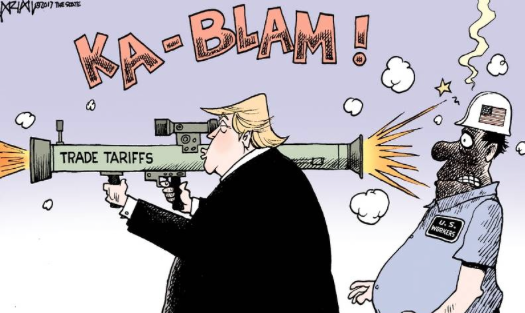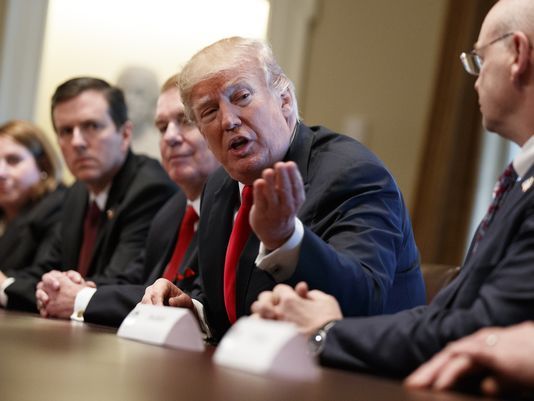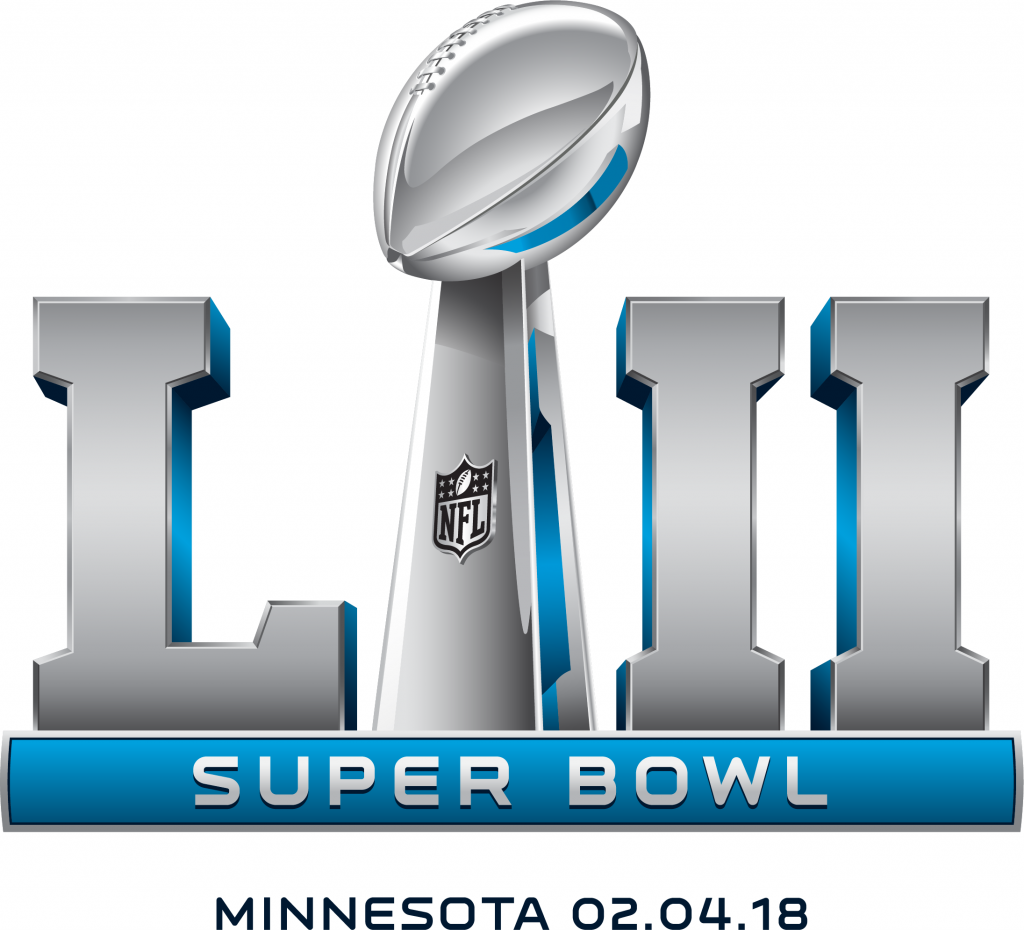|
The Right to Bear Muskets (1791) and Bear Machine Guns ?(2018)
|
 |
Muskets of 1791 a far cry from firepower of today
|
 |

By John Freivalds
Duluth News Tribune/Minneapolis Sun Sailor
Published 3/1/2018 and 3/22/2018
 Hunters in northern Minnesota need to bear some facts in mind when it comes to firearms.
Hunters in northern Minnesota need to bear some facts in mind when it comes to firearms.
The Second Amendment was passed in 1791, giving the right for ordinary citizens to bear arms. This is the argument that strict conservatives and the NRA use to justify anyone having a weapon — no question asked.
Actually, when I went to Cabela's to buy a hunting rifle, I was given a form to fill out — with a question: "Are you are convicted felon?" I answered "no" and walked out of the store with my stainless-steel, Martin, single-shot, muzzleloader that can fire 14 rounds of .22-caliber ammo. It has an arduous reload process, by the way.
In addition, at home, I have a .38-caliber revolver that seems more like a handheld cannon than a handgun. It holds six rounds and is quickly reloaded.
Even with my tiny legal arsenal, I have more firepower than any patriot had in 1791 when the Second Amendment was passed. Remember that was the era of the front-loaded musket, which had a barrel three and a half feet long. It was not a concealed weapon. With practice, an accomplished marksman of the time could load three rounds per minute. And, Hollywood movies notwithstanding, it was highly inaccurate. This is why soldiers would stand together and let loose barrages of bullets hoping some would hit their target at a rate of three rounds per minute.
The weapon of choice for the Parkland, Fla., school shooter (he had 10 guns at home) was an AR-15, which fires 90 rounds per minute as a semiautomatic and 800 rounds per minute when modified as a full automatic. A knowledgeable gunsmith can easily make the modification.
During the Vietnam War, the M16, the forerunner of the AR-15, was the weapon issued to American GIs. In non-automatic use, it fired at a rate of 65 rounds per minute.
Let's repeat that: The weapons soldiers used in Vietnam fired at a slower rate than the AR-15 you can buy now at a Cabela's store.
The AR-15 is more reliable, too, for the M16 had a "failure to extract" malfunction. Spent cartridges would get stuck in the chamber due to faulty gunpowder. Some military types I know said we could have won the Vietnam War with weapons as reliable as the modern-day AR-15.
There are about 150 gun manufacturers in the U.S., some started by veterans of the Vietnam War who personally saw the defects in the M16.
One big manufacturer is the Freedom Group, which also produces the Bushmaster hunting rifle, sold with the motto to "reach out and touch someone."
Another manufacturer is H&R, which sold firearms to the German military back in 1956. "Since then (H&R) has produced the most famous and reliable battle rifles of the world, most notably the MP5 and HK416 (the rifle used to kill Osama Bin Laden)," according to the Shooter's Hog website. H&R also produced the top-of-the line AR-15, the MR55641, which retails in the U.S. for $2,500. You can buy a DPMS AR-15 semiautomatic with a six-position adjustable stock in the U.S. at Cabela's for $499.99.
To summarize, in 1791, you could get a musket that you could load and fire at three rounds per minute. Today you can get an AR-15 that shoots 90 rounds per minute and can be modified to 800 rounds per minute and is better than the rifle used by U.S. soldiers during the Vietnam War.
And to get an AR-15, all you need to do is to remember to write "no," in the right spot on the gun-shop questionnaire.
John Freivalds of Wayzata, Minn., is a writer and the author of six books. His latest is "Ramblin' Man." His website is jfapress.com.
Here is what the people are saying!!
Duluth News Tribune
I just read your opinion piece in the Duluth news tribune. I would love to know how you are getting the number of rounds per minute one semi auto can fire compared to another. Claiming an AR-15 can fire 90 rounds per minute while an M16 can only fire 65 per minute is just downright shady. You are intentionally misreporting a number that is unquantifiable. One shooter will fire at a faster or slower rate compared to another. Saying a semi auto can fire at any given rate is ridiculous.
You also stated that "a knowledgeable gunsmith can easily make the modification" in regards to making an AR-15 full auto. You completely failed to mention that it is highly illegal to do so. Automatics are highly regulated, to far so to go into in one email.
Finally in the beginning of your opinion piece you state that the 2nd amendment was passed in 1791 to give ordinary citizens the rights to bear arms. The full 2nd amendment Is "A well-regulated militia, being necessary to the security of a free state, the right of the people to keep and bear arms, shall not be infringed"
This was written with the intent for the people to have a check on the government. In case the new government did the same thing as the last. Supreme Court justices have ruled that it was intended to give the citizen access to what the government has and uses. Nowhere in there does it come close to mentioning hunting.
John Clark
Minneapolis Sun Sailor
macdon31us Mar 4, 2018 10:36pm
a tyrannical government won't be coming for citizens guns with muskets!

 Iowa finds itself smack in the midst of the heated debate over free trade. And we consumers want Wal-Mart’s mantra — goods at low prices, and so what if they are imported?
Iowa finds itself smack in the midst of the heated debate over free trade. And we consumers want Wal-Mart’s mantra — goods at low prices, and so what if they are imported?


 Hunters in northern Minnesota need to bear some facts in mind when it comes to firearms.
Hunters in northern Minnesota need to bear some facts in mind when it comes to firearms.

